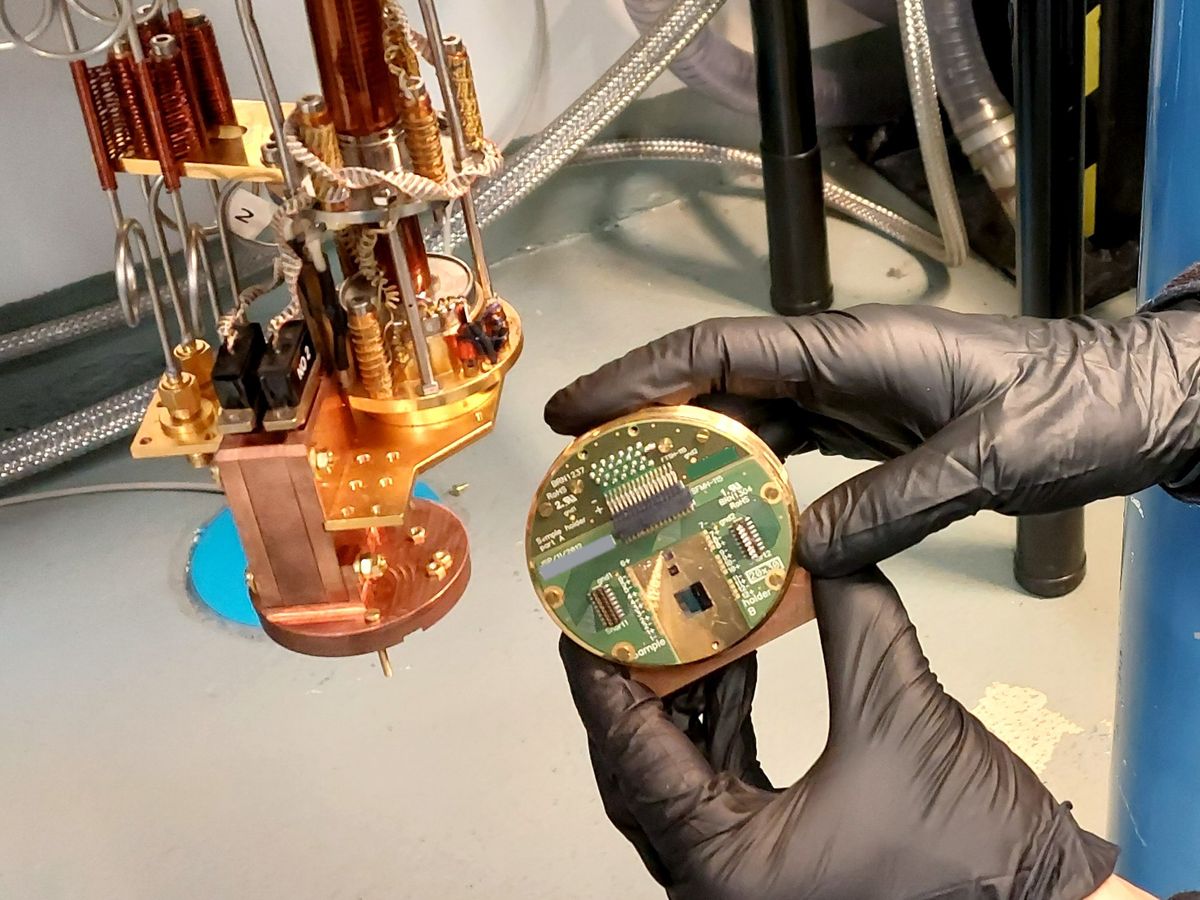Quantum computers hold the promise of tackling problems that no traditional computer is capable of solving. However, a key limitation they face is that most types require bulky, energy-hungry refrigerators to keep qubits at near absolute-zero temperatures. Now, researchers say, new devices that operate a bit like vacuum tubes could slash the size and power consumption of these fridges by a factor of 10.
Google, IBM, Amazon and others are building quantum computers based on superconducting circuits that have to be chilled to near absolute zero. Currently, they depend on large, complex, expensive systems known as dilution refrigerators, which use multiple stages of cooling to chill circuits to 1 kelvin or below. The complexity of these refrigerators is greatest at the coldest stage, which involves mixing different isotopes of liquid helium.
Instead of pumping cryogenic fluids, scientists in Finland are developing purely electronic methods of refrigeration that could prove much smaller and simpler while consuming one-tenth the power of today’s systems.
“Our technology could help the industry scale down overall quantum computer system size,” says Mika Prunnila at the VTT Technical Research Center of Finland, in Espoo.
The new coolers fall into the class of thermionic devices, which shed heat in the form of electrons. (Vacuum tubes are usually thermionic emitters.)
A key problem thermionic coolers have long faced is that objects typically also radiate heat in the form of atomic vibrations. In solid materials, these vibrations travel as quasiparticles known as phonons. If a thermionic cooler is fully in contact with its surroundings—and not, say, enclosed in vacuum—the electrons it radiates can heat up whatever it touches. These heated surroundings can then pass heat back to the cooler in the form of phonons.
“This may kill the cooling effect completely,” Prunnila says.
The new thermionic cooler developed by Prunnila and his colleagues is built to control phonon flow. The device is a junction between semiconductor and superconductor components. Electrons from the semiconductor can jump to the superconductor, carrying away heat. At the same time, the junction scatters or blocks phonons, making it a thermal insulator.
Cool experiments with thermionics

In experiments reported in 2020, the scientists were able to lower a silicon chip’s temperature to nearly half that of its surroundings using such a thermionic system.
“Electron cooling will fully dominate if we can fabricate high-enough-quality tunnel junctions,” Prunnila says. With this new research, he says, “we were able to do that.”
The researchers have since developed 3D integration methods to stack their coolers onto chips and help pack the electronics closer together. They have also developed multistage refrigeration techniques, which can help the system attain huge drops in temperature, Prunnila says.
The scientists are now developing a commercial demonstrator of their technology as part of the SoCool project, which started this summer and will run for three years with funding from the European Union, Prunnila says.
There may be a number of applications for this cooler beyond quantum computing, Prunnila notes. For instance, smaller coolers may prove useful for satellites and space missions, and “various field-deployable cryo-enabled sensing and communication technologies, which were impractical before, due to the large mass and size of the required cryogenics, could become possible.”
- Three Frosty Innovations for Better Quantum Computers - IEEE ... ›
- Google Builds Circuit to Solve One of Quantum Computing's Biggest ... ›
- Intel Unveils Cryogenic Chip to Speed Quantum Computing - IEEE ... ›
- IonQ Unveils Rack-Mounted Quantum Computers - IEEE Spectrum ›
- None ›
Charles Q. Choi is a science reporter who contributes regularly to IEEE Spectrum. He has written for Scientific American, The New York Times, Wired, and Science, among others.



